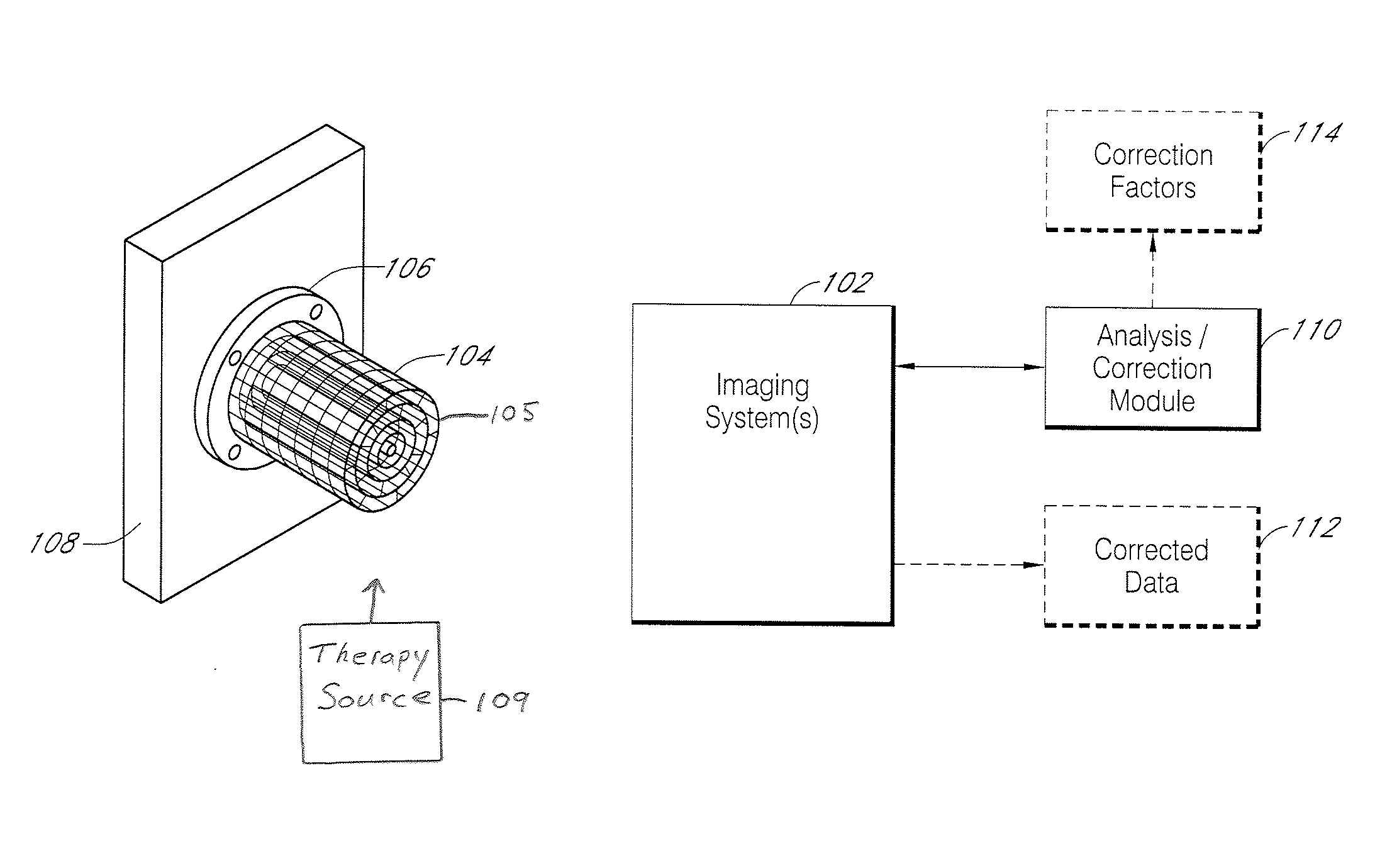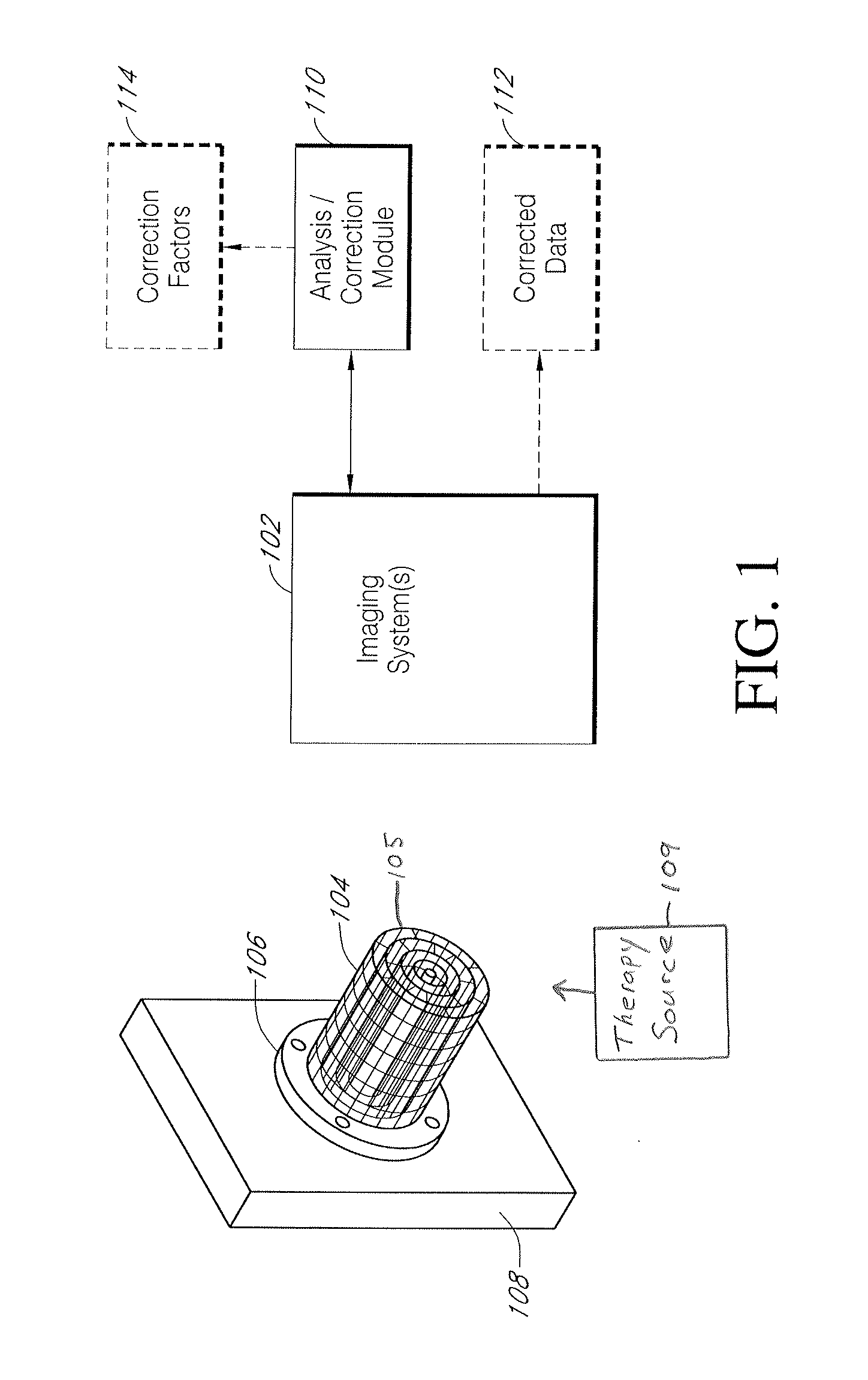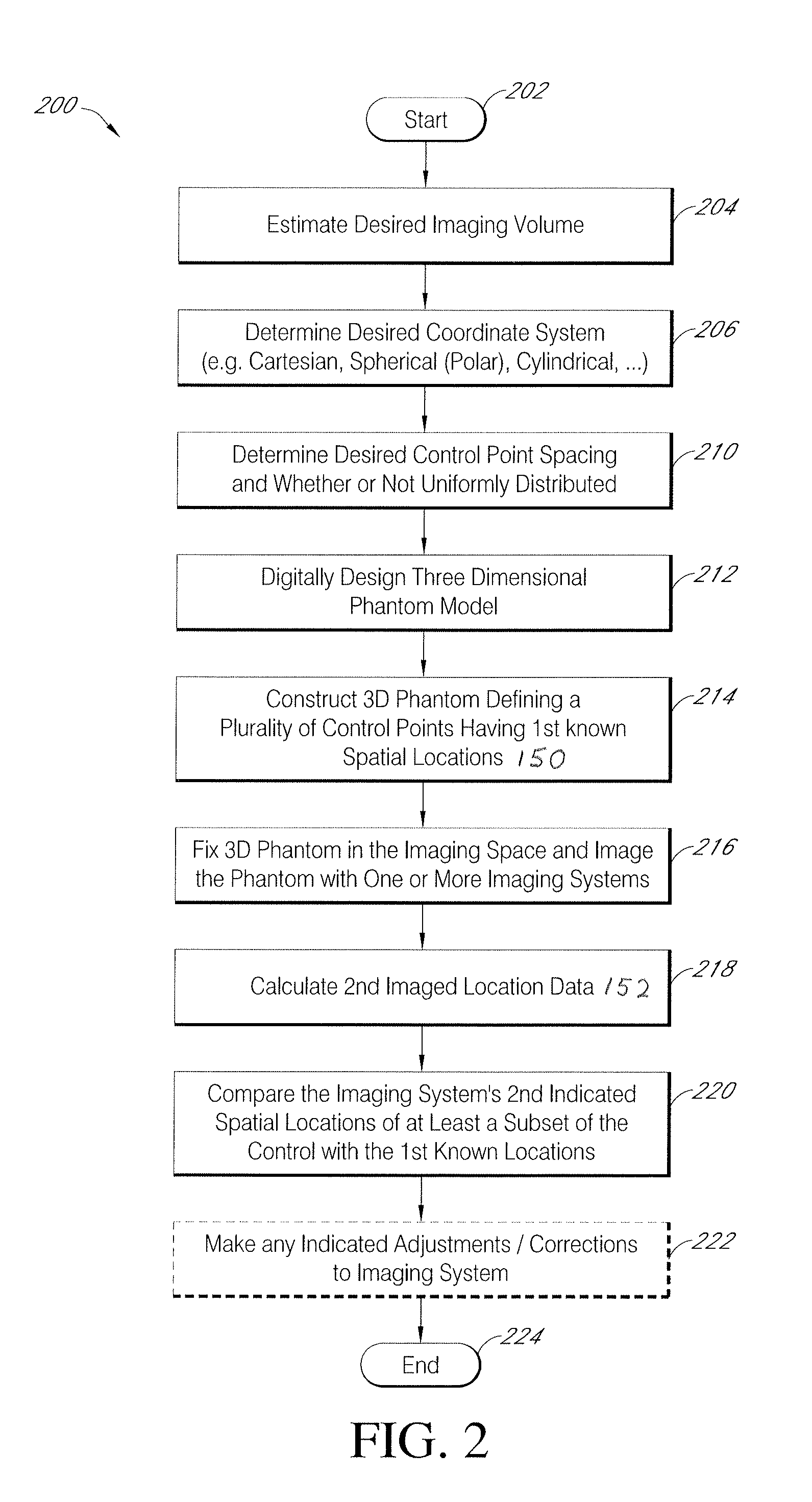Systems and methods for characterizing spatial distortion in 3D imaging systems
a technology of 3d imaging and spatial distortion, applied in the field of image guided therapy, can solve the problems of compromising the efficacy of intended therapy, compromising the ability to accurately deliver appropriate therapy, and all known imaging technologies suffering from some degree of spatial distortion, and achieve the effect of reducing spatial distortion
- Summary
- Abstract
- Description
- Claims
- Application Information
AI Technical Summary
Benefits of technology
Problems solved by technology
Method used
Image
Examples
Embodiment Construction
[0036]FIG. 1 illustrates schematically embodiments of a system for characterizing spatial distortions that may occur in image data obtained by an imaging system 102. The imaging system 102 can comprise one or more of a wide variety of imaging technologies including but not limited to MRI, CT, SPECT, and PET. The imaging system 102 can passively monitor one or more types of emissions from an imaging volume or space. The imaging systems 102 may also generate or project fields, energies, and / or particles and monitor interactions of these projected or generated energies and / or particles with the imaged volume.
[0037]As previously noted, known imaging systems 102 are subject to at least some degree of spatial distortion. In at least some applications, the spatial distortion is at least in part generally repeatable and can be referred to as machine dependent distortion. Such distortion is generally dependent on the design and construction of a given imaging system 102 and the nature of the...
PUM
 Login to View More
Login to View More Abstract
Description
Claims
Application Information
 Login to View More
Login to View More - R&D
- Intellectual Property
- Life Sciences
- Materials
- Tech Scout
- Unparalleled Data Quality
- Higher Quality Content
- 60% Fewer Hallucinations
Browse by: Latest US Patents, China's latest patents, Technical Efficacy Thesaurus, Application Domain, Technology Topic, Popular Technical Reports.
© 2025 PatSnap. All rights reserved.Legal|Privacy policy|Modern Slavery Act Transparency Statement|Sitemap|About US| Contact US: help@patsnap.com



